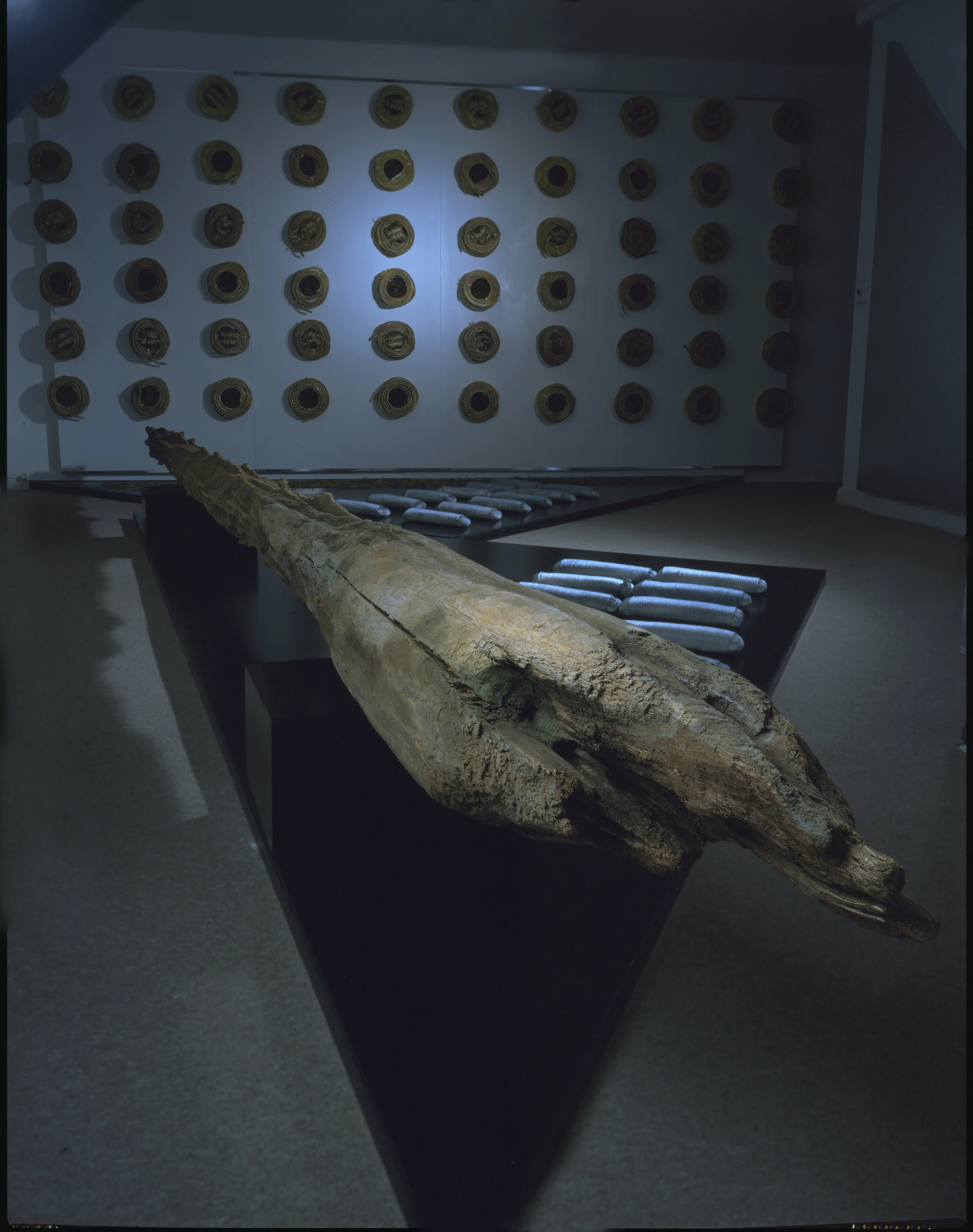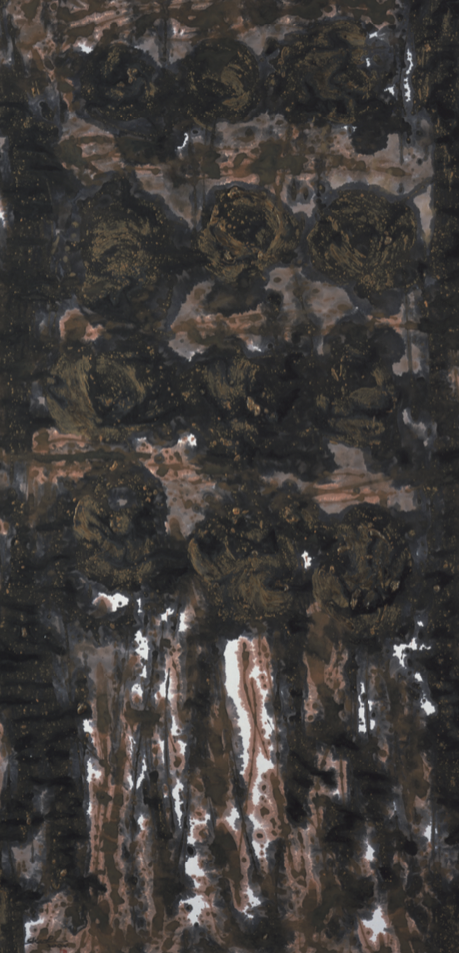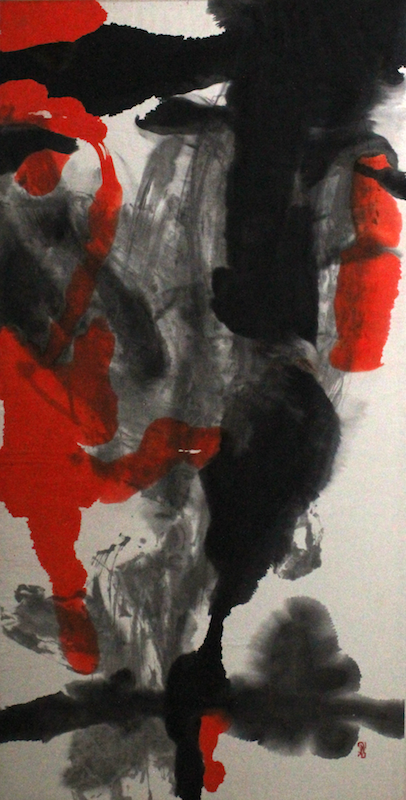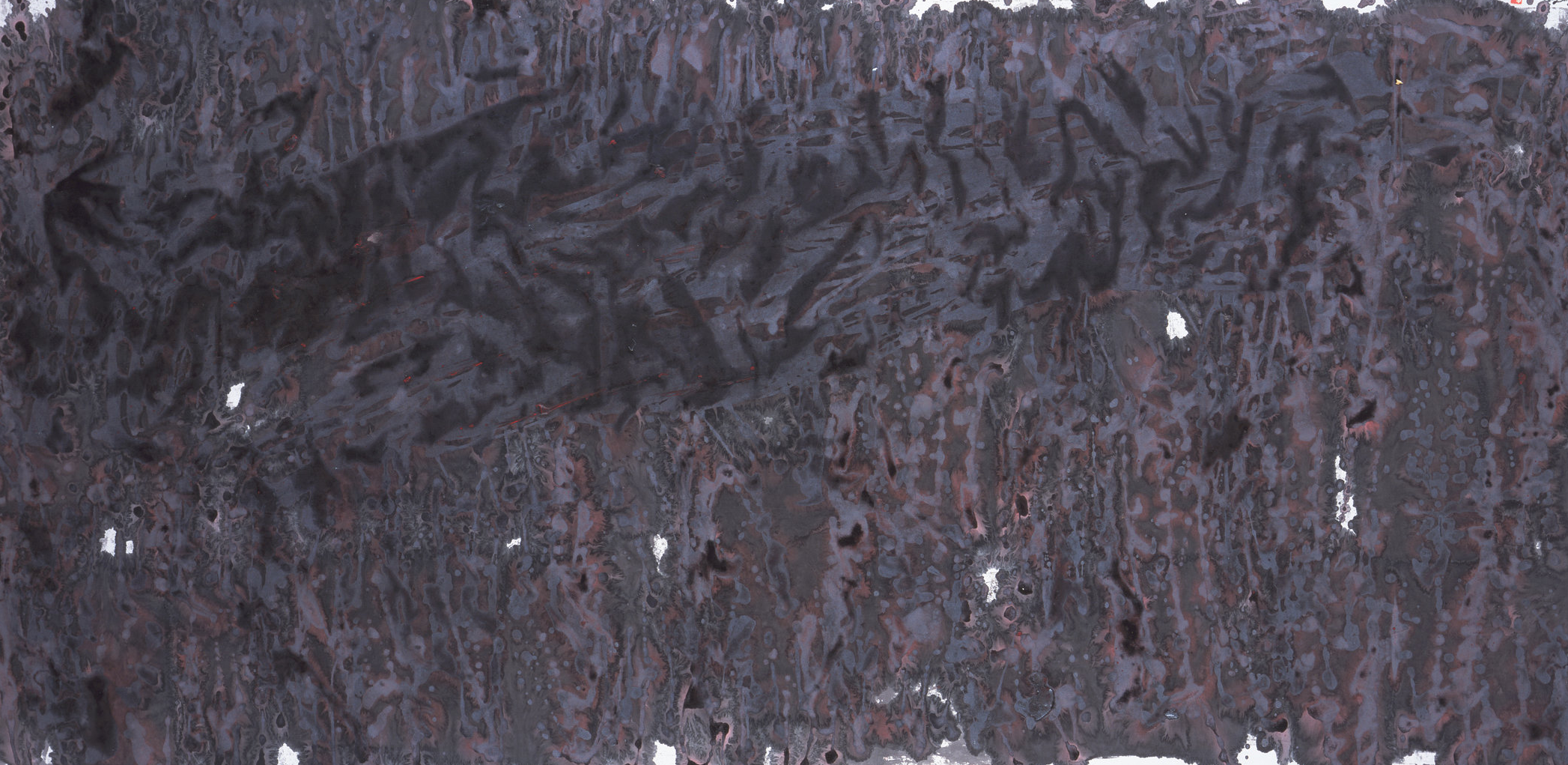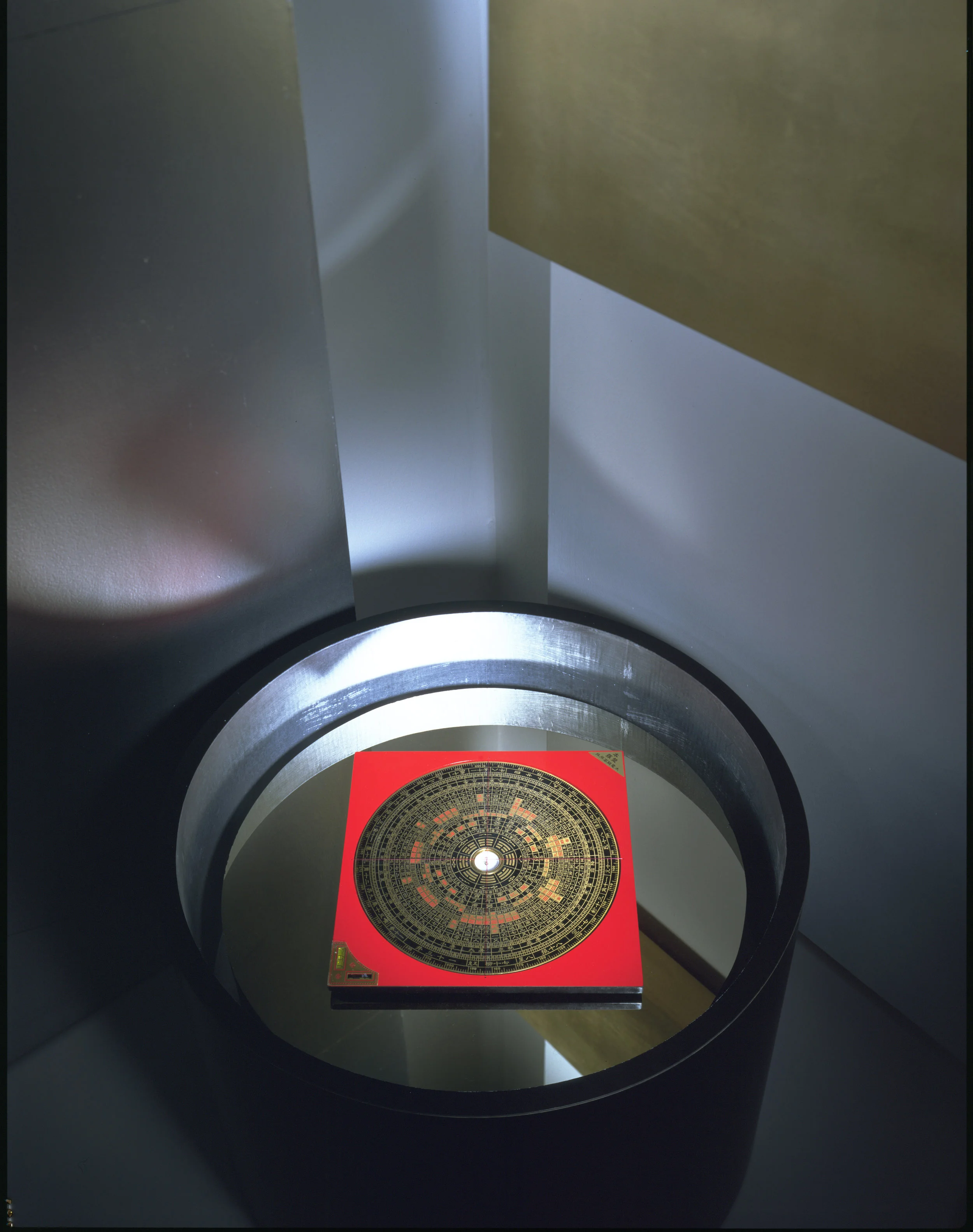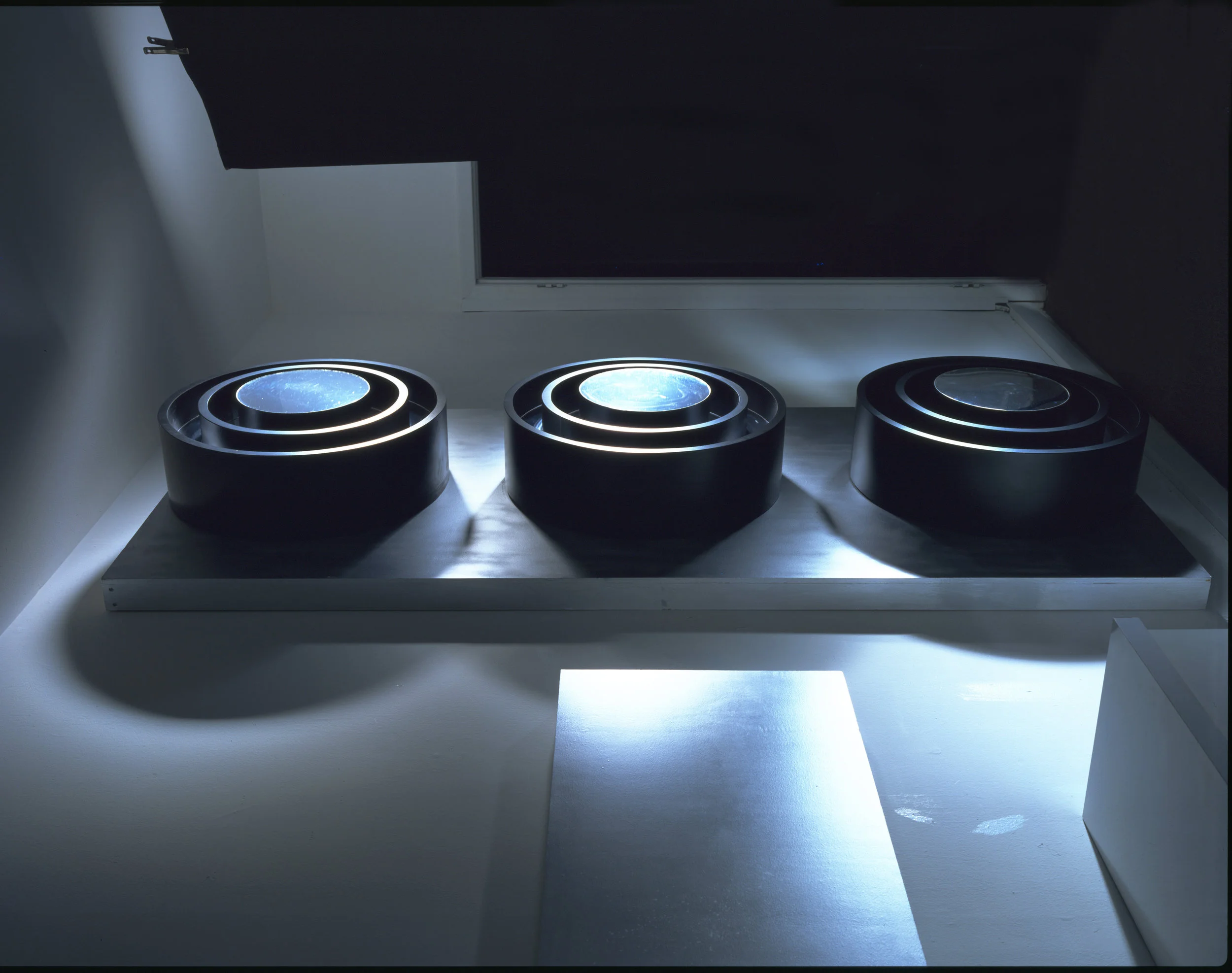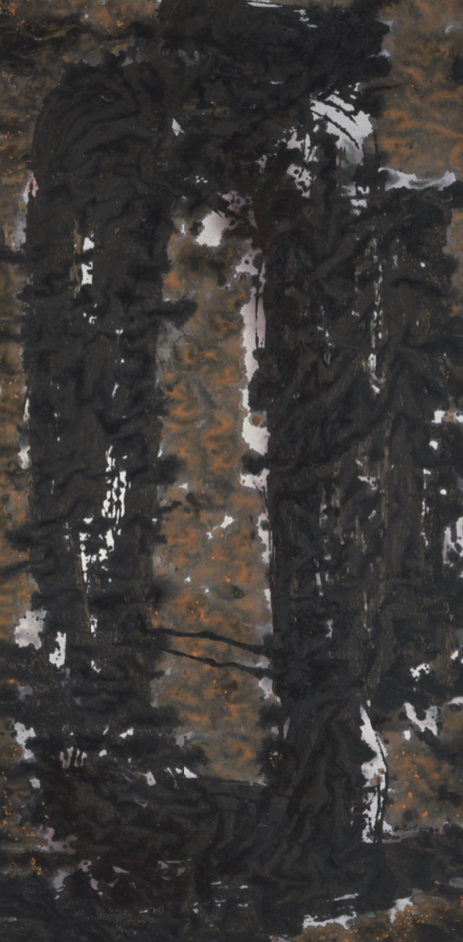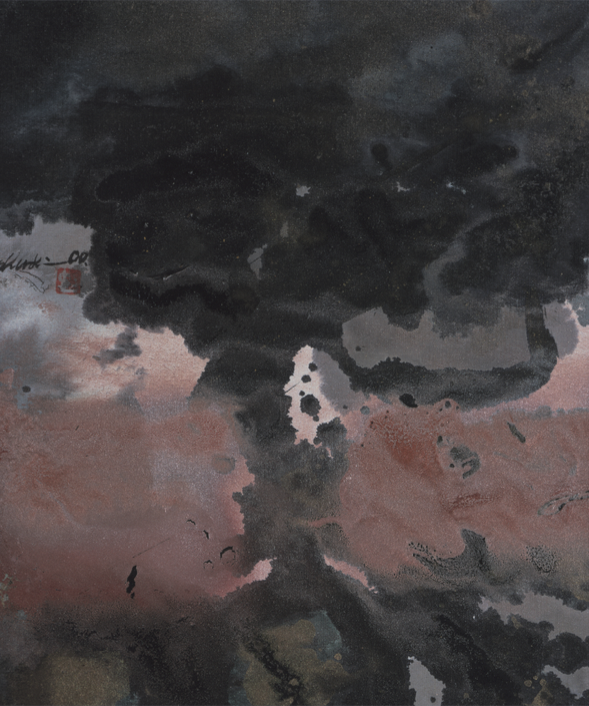images:
top - 2000
middle - 60
bottom - 64
陰陽交錯·成就大地·蘊育其間·萬物於是生焉·此乃天地生生不息之運轉定律· 也是 60·64·2000 企欲表達的中心主題。創作者欲藉中國易經哲理、風水卦相及 陰陽曆法說明宇宙間的運行法則·透過萬象的互 ·知天命、勵行天道·以祈福跨 世紀的來臨。
中國曆法中·以天干(甲乙丙丁戊己庚辛壬癸)地支(子丑寅卯辰巳午未申酉戌亥) 相互搭配·一輪而成「60」·是為一甲子·故以 60 個繩圈代表甲子·一圈寓一年。 而於繩圈中放置 60 種不同的草藥·取其草藥的採擷因節氣的不同而有變化·藉以說 明四季與天文、地理、氣象等自然因素的互 關係。而以繩索作甲子·主要在於中 國人相信人出生時本命皆繫紅繩·為取其吉利·象徵好的開始。
卦·相傳起於伏羲氏·乃易經八卦的一部分。 「64」則象徵八八六十四卦·涵蓋宇 宙萬物間的相互關係·亦是風水之學的重要論據·依此可預知人類生老病死·及萬 物生息的規則與變化。其中·「乾坤卦」·亦稱「地天泰」·乃為最上卦·乾為天 而坤為地·以泰解天地·故以銀色之三圓表之·並以“天地水火風雷鋒山”來呈現 六十四卦中玄與空的交互影響。相傳吉卦之間乃金龍棲息之地·蘊藏萬物以待金龍 出土·故以乾坤吉卦表龍穴·與甲子中的金龍年呼應·以寓即將現世之君子。
邁入二十一世紀的 2000 年·在歷史上具有承接 2000 年前後歷史精華的意義。今年 2000 年正逢庚辰年·是為龍年·與五行的「金」相結合·即成金龍年·在中國易經 學上更是寓意非凡。在易經中·認為金乃歲月累積的精華物·為吉祥的表徵·故相 信每逢金龍年必出君子。故將為時八年·歷經海濤衝擊、海水浸潤的古木加以雕琢· 結合歲月風化腐蝕的遺痕和人為的力量·雕刻出血脈栩栩如生的金龍·並置其於乾 坤陰陽之龍穴上·與甲子的白色背景相對應·其下置黑色山形是為陰·白色反為陽· 陰陽與置於其中的銀色乾坤卦相互交錯·是為龍穴。
龍穴的設計·乃取決於龍脈的流向:太宗山·太祖山·父母山·以至結穴·故以金 龍抱珠為其整體造型。再且·金銀於中國具吉祥之意·故以銀色三角表山脈·橫向 延綿不絕·最終以羅盤表結穴。當羅盤轉 時·光束折射反照·乃謂地理回歸天· 與 64 卦相呼應·則可以卜卦、求子、求健康、問吉凶。藉此·觀者可卜得所求取之 事·而與此裝置藝術有所互 。
Lin Sha’s installation 60.64.2000, initially created in 1992 and completed in the year 2000, has employed numerous sophisticated concepts derived from the Chinese lunar calendar, Chinese calligraphy, and the I Ching (or the Book of Changes 易經 )(1) to finally form his art of Feng Shui ( 風水 ).
To represent the changes of time and order in the Chinese lunar calendar, Lin Sha has created 60 rope-tied circles against the wall to imply the 60 units resulted from the combination of the 10 celestial stem gan ( 干 ) and the 12 terrestrial branches zhi ( 支 ) in the Chinese lunar calendar, and each of which has inserted a different kind of Chinese herb which grows in different seasons to interact with the gan-zhi combinations cyclically.
In the I Ching, it says the cosmos was resulted from the interaction of Yin ( 陰 ) and Yang ( 陽 ). The constantly changing interactions of Yin and Yang give rise to the infinite variety of patterns of life, and this is symbolized in further permutations of the Yin and Yang lines. Adding a third line produced the eight three-line symbols of the Pa Kua ( 八卦 ). These eight symbols are known as the “eight trigrams” and are said to have been discovered by Fu Xi, a legendary savage king of China, who saw them inscribed on the back of a tortoise he found on the bank of the Yellow River around 3000 B.C. Later, around 1100 B.C., King Wen combined the eight trigrams to make the 64 hexagrams of the I Ching. The top line of each trigram represents heaven, the bottom earth and the middle line is us, humankind. In contrast with the white background of the ’60 circles’ there are two black triangles lying on the ground to symbolize Yin, on which an old tree trunk and two symbols of Ch’ien ( 乾 ) and K’un ( 坤 )(3) in the Pa Kua have been placed orderly against the white, that represents Yang. The tree trunk represents a dragon, which explains that the year 2000 is equivalent to the golden dragon year (or gengchen 庚辰 year) in the Chinese lunar calendar, and it is believed that a hermit saint will come out to the earthly world to bring human beings an auspicious future as the dragon is interacting with Ch’ien and K’un.
Based on the 64 hexagrams of the I Ching and worked with a complicated Feng Shui compass, Lin Sha has perfectly created a dragon’s vein, which is believed to be the best arrangement of Feng Shui.Therefore, walking through the ‘silver mountains’ (triangles) mounted onto the wall and guided by the arrangement of Feng Shui, every element is well designed to be harmonious and to blend with nature. Combining the past and the present, the year 2000, as the golden dragon year, has set a new start in the history of humankind.

